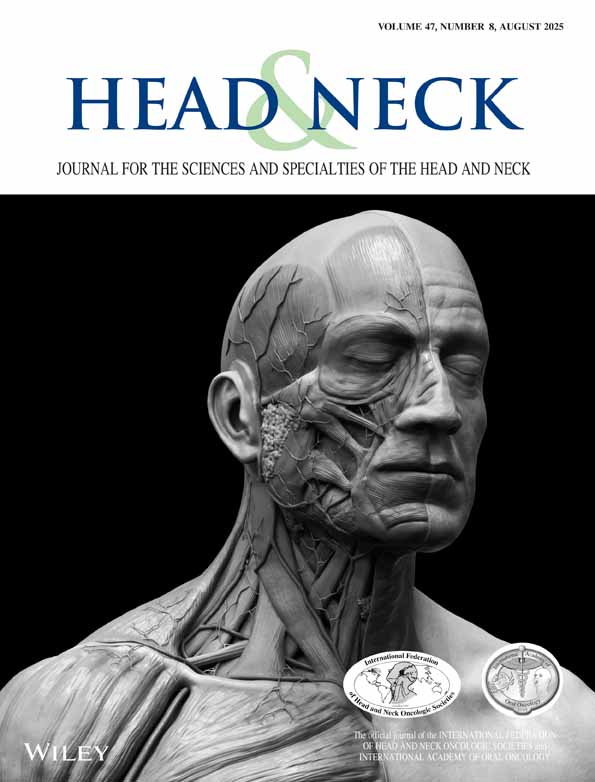Cervical nodal metastases from occult primary: Undifferentiated carcinoma versus squamous cell carcinoma
Abstract
Purpose/Objective
Controversy exists regarding the management of cervical lymph node metastases from occult primary. Oncologists face a major challenge in adopting an optimal approach. This study attempted to compare the clinical course of two different histologic findings of this disease entity.
Materials and Methods
A retrospective analysis was performed for all patients referred to our institution between 1988 and 1998 with cervical lymph node metastases from an unknown primary. Case records of consecutive unselected patients with histologically confirmed carcinoma in cervical lymph nodes were reviewed. Those with histologic findings other than squamous cell carcinoma (SCC) or undifferentiated carcinoma (UDC) and lymphadenopathies at the supraclavicular fossa alone or below the clavicles at the time of diagnosis were excluded. There were 45 patients identified with a mean follow-up of 36 months (range, 4–110 months). Thirty-seven were men and eight were women. The mean age was 57 (range, 29–91). There were 32 patients with SCC and 13 patients with UDC. Treatment modality included surgery (S) alone in 1 patient (2%), radiotherapy (RT) alone in 24 patients (53%), and combined modality in 20 patients (45%). (Twelve patients (27%) had combined S and RT, 8 patients (18%) had combined chemotherapy and RT.) Twenty-eight patients (62%) were treated with radical intent. For those patients treated by radical RT, the RT field covered both sides of the neck and the potential mucosal primary (PMP) sites, including the entire pharyngeal axis. The median radiation doses to the lymph nodes and the PMP were 65 Gy (range, 60–70 Gy) and 60 Gy (range, 40–70 Gy), respectively.
Results
At the time of analysis, ultimate control of disease above the clavicles according to N stage, treatment intent, and histologic type was as follows: N1s, 7 of 7 (100%); N2s, 15 of 26 (58%); N3s, 1 of 12 (8%); radical intent, 19 of 28 (68%); palliative intent, 3 of 17 (18%); UDC, 11of 13 (85%); SCC,11 of 32 (34%). Eleven patients remained alive and disease free, with a median follow-up of 79 months (range, 27–110 months). The 5-year disease-specific survival (DSS) for the radical treatment group and the palliative treatment group were 67% and 18%, respectively (p = .0011). Significant difference in 5-year DSS was observed among the different N groups: 100% for N1s, 55% for N2s, and 0% for N3s, respectively (p = .0001). There was also a significant difference in the 5-year DSS between UDC and SCC: 81% for UDC vs 34% for SCC (p = .01). No significant difference in the 5-year DSS was observed on the basis of treatment modality in the radically treated group: 63% for RT alone vs 75% for S + RT (p = .711).
Conclusions
UDC histologic findings in our series are associated with better locoregional control and DSS than SCC. Our results in local control, emergence of primary tumor, and DSS are comparable with other published data. However, disease control of advanced nodal stage remains poor; more aggressive treatment approaches, like the use of concurrent chemoradiation or altered fractionation scheme, should be explored. © 2002 Wiley Periodicals, Inc. Head Neck 24: 361–369, 2002; DOI 10.1002/hed.10054




